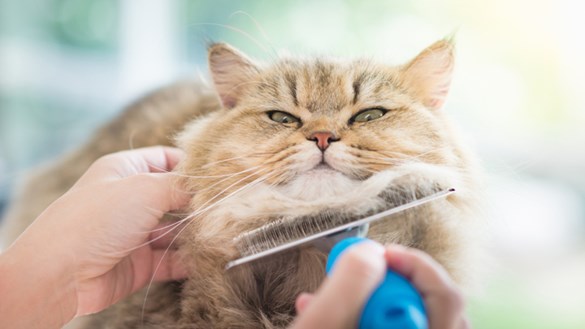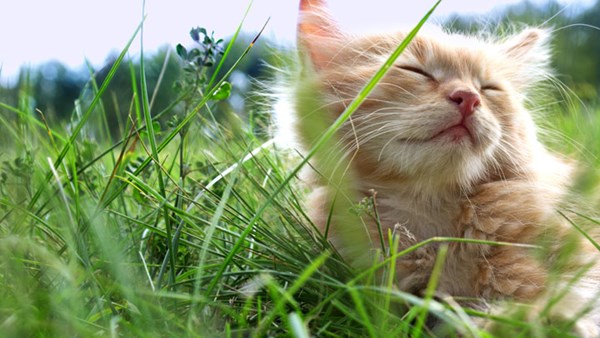Cat Grooming Tips
Regularly grooming your cat is important; it’s also a great way to bond with them. Here are some tips on how to groom your cat.

How often should I groom my cat?
Cats are very clean animals and can often be seen preening themselves, sometimes at the strangest times. However, this doesn’t mean that they don’t need regular grooming.
How often you need to groom them will depend on whether your cat is short, medium or long-haired. Medium and long-haired cat’s may struggle to cover all areas themselves and you will need to provide some assistance to keep them looking their best.
This is especially important as we move towards summer. Regular brushing will ensure that your cat isn’t hanging onto excess fur; helping them stay a little cooler and helps to keep your clothes and furniture fur free.
We’ve pulled together some cat-grooming tips to get you started.
Cat Grooming Tips

Choose your moment
Groom your cat when they are relaxed and happy and have chosen to spend time with you. This should mean that you get a good amount of time to brush and check them.
Let them familiarise
Allow your cat to examine the brush or comb that you are using. They may want to nudge and sniff it to add their scent.
An easy win
Start by brushing the top of the head. This is an area that most cats enjoy being stroked. It should make them feel more comfortable.
Know your limits
Progress down their back, always brushing in the direction of your cat’s fur. You should know your cat well enough to understand where they like being stroked. For example, many cats aren’t keen on having their tummy stroked or brushed. This may bring the grooming session to an abrupt end.
Enough is enough
If your cat shows signs that they aren’t enjoying being brushed, they may try to escape or attack the brush or comb. If this happens, it’s a good idea to stop and try again another time
The right type of brush
There are many types of brushes and a combs available for cats. The right one will depend on how long your cat’s fur is and whether they have signs of matting. There are also brushing gloves available, which are great for general grooming.
What else can you find?
While you are brushing your cat, you should always check for fleas and also for other debris that they may have picked up on their travels. In the summer many cats come home with various seeds and sticky burrs stuck in their fur. Regular grooming will remove these before they get too tangled.
It’s also a good idea to make sure that areas such as their ears are clean, and their gums aren’t inflamed. A quick look is fine, if you are concerned about anything you see or any changes, please talk to your vet.
Start early
If you have a new kitten, it’s great to get them used to being brushed and groomed from a young age. Start with very short sessions, just enough so that it becomes part of their regular routine.
Grooming a cat with matted fur
Many medium and long-haired cats will experience matting. This could be because they’ve not been brushed or because they’ve got something stuck in their fur. This may be painful; you should carefully try to disentangle the area.
If the matting is not close to the skin, you could try to carefully snip the fur. If it’s close to the skin or very matted, you should talk to your vet about the best approach.
Bathing your cat
The majority of cat’s don’t like baths and a healthy groomed cat shouldn’t need one. If your cat has managed to roll in something unpleasant, talk to your vet before resorting to a bath.
For advice on grooming your cat – speak to your Medivet practice.

Our Healthcare Plan For Your Cat
With the Medivet Healthcare Plan, you can save an average of £165 each year and that’s without discounts that the plan offers on top.
Learn more


